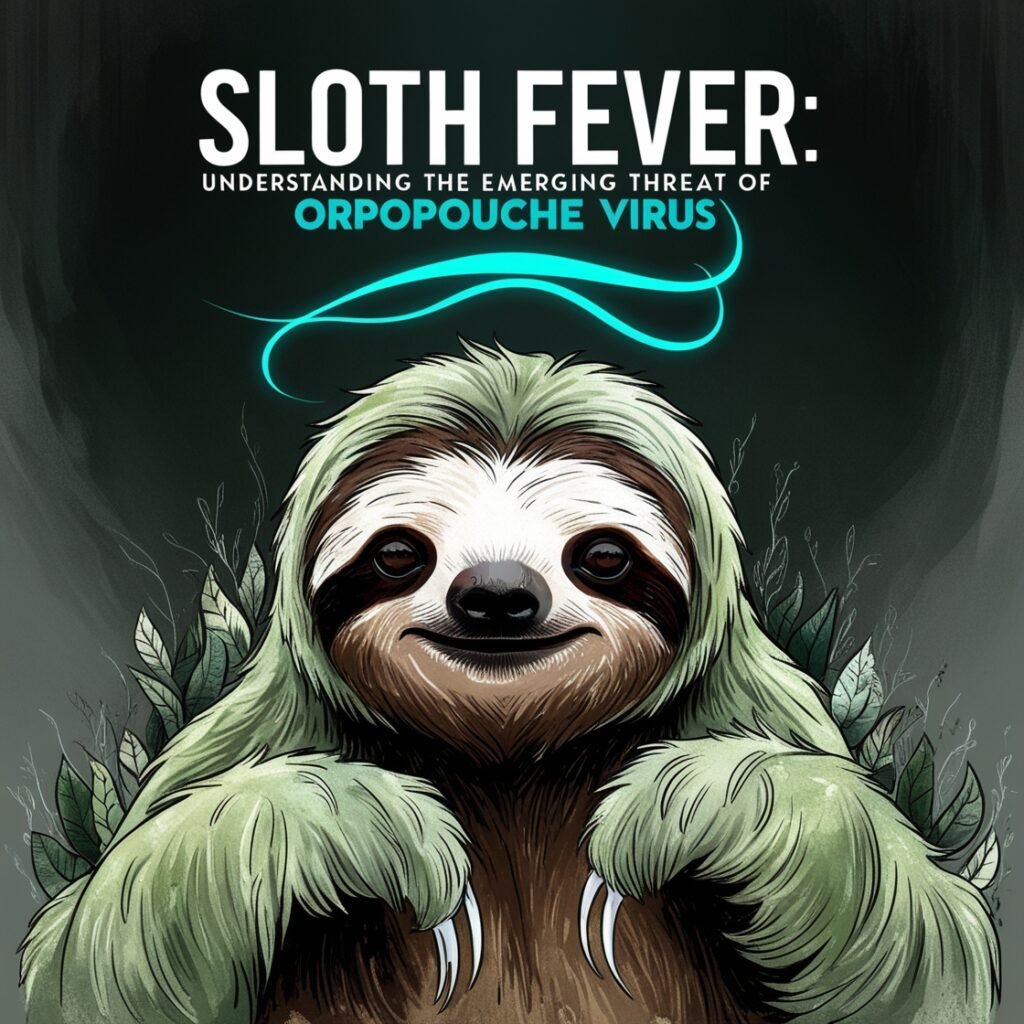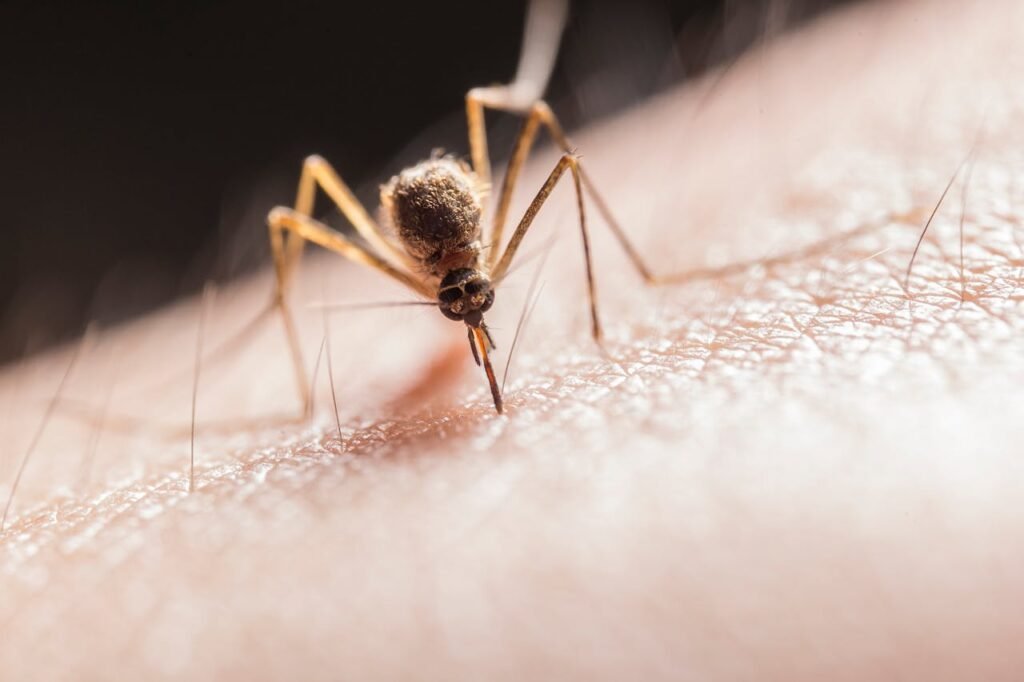
Table of Contents
Introduction
Sloth fever, scientifically known as the Oropouche virus, is an emerging infectious disease that has been gaining attention due to its potential to cause significant health issues. Originating from the tropical regions of Central and South America, this virus is primarily transmitted through insect vectors such as midges and mosquitoes. The term “sloth fever” is derived from the virus’s association with sloths, which are believed to be one of the natural reservoirs of the virus.
Understanding sloth fever is crucial for several reasons. Firstly, the symptoms of the Oropouche virus can range from mild to severe, including fever, headache, and in some cases, neurological complications like meningitis and encephalitis. Secondly, with the increasing ease of global travel, the risk of the virus spreading to non-endemic regions is higher than ever. Awareness and education about sloth fever are essential for early detection, effective prevention, and timely treatment, thereby reducing the potential impact on public health. By staying informed, individuals and healthcare providers can better protect themselves and their communities from this emerging threat. Also read about Monkeypox to know the latest details.
What is Sloth Fever?

Definition and Origin of the Term ‘Sloth Fever’
Sloth fever is a colloquial term used to describe infections caused by the Oropouche virus. The name “sloth fever” stems from the virus’s association with sloths, which are believed to be one of its natural reservoirs. This term helps to highlight the unique ecological connections and the zoonotic nature of the virus, emphasizing its transmission from animals to humans.
Explanation of the Oropouche Virus
The Oropouche virus is an arbovirus, meaning it is transmitted by arthropods such as midges and mosquitoes. It belongs to the family Peribunyaviridae and is primarily found in tropical regions of Central and South America. The virus was first identified in Trinidad in 1955 and has since caused numerous outbreaks, particularly in Brazil and other parts of the Amazon basin.
In humans, the Oropouche virus can cause a febrile illness characterized by symptoms such as fever, headache, muscle and joint pain, and in some cases, more severe neurological complications like meningitis and encephalitis. The virus’s ability to spread rapidly through insect vectors and its potential to cause significant health issues make it a growing concern for public health authorities. Understanding the nature and transmission of the Oropouche virus is essential for developing effective prevention and control strategies.
Transmission and Spread
How the Virus is Transmitted
The Oropouche virus, responsible for sloth fever, is primarily transmitted through insect vectors, particularly midges (Culicoides paraensis) and mosquitoes. These tiny insects become carriers of the virus after feeding on infected animals, such as sloths, which are believed to be natural reservoirs. Once infected, the midges and mosquitoes can transmit the virus to humans through their bites. This mode of transmission is similar to other arboviruses, making vector control a crucial aspect of preventing the spread of sloth fever.
Geographic Regions Affected
The Oropouche virus is predominantly found in tropical regions of Central and South America. Countries like Brazil, Peru, Panama, and Trinidad and Tobago have reported significant outbreaks. The Amazon basin, with its dense forests and abundant wildlife, provides an ideal environment for the virus to thrive and spread. Urban areas in these regions are also at risk, especially during the rainy season when the population of midges and mosquitoes increases.
Recent Outbreaks and Travel-Associated Cases
In recent years, there have been several notable outbreaks of the Oropouche virus. For instance, Brazil has experienced multiple outbreaks, with thousands of reported cases. The virus’s ability to spread rapidly in densely populated areas has raised concerns among public health officials. Additionally, with the increase in global travel, there have been instances of travelers contracting the virus and bringing it to non-endemic regions. These travel-associated cases highlight the importance of awareness and preventive measures for individuals visiting affected areas.
By understanding the transmission dynamics and geographic spread of the Oropouche virus, we can better prepare and implement strategies to mitigate its impact on public health.
Symptoms and Diagnosis

Common Symptoms
Sloth fever, caused by the Oropouche virus, typically presents with a range of symptoms that can vary in severity. The most common symptoms include:
- Fever: A sudden onset of high fever is often the first sign of infection.
- Headache: Intense headaches are a frequent complaint among those infected.
- Muscle and Joint Aches: Patients often experience significant muscle and joint pain, which can be debilitating.
- Fatigue: Generalized fatigue and malaise are common, making daily activities challenging.
- Rash: Some individuals may develop a rash, although this is less common.
These symptoms usually appear within 4 to 8 days after being bitten by an infected insect and can last for several days to a week.
Severe Symptoms and Complications
While many cases of sloth fever are mild, the Oropouche virus can lead to severe complications in some individuals. These include:
- Meningitis: Inflammation of the membranes surrounding the brain and spinal cord, leading to severe headaches, neck stiffness, and sensitivity to light.
- Encephalitis: Inflammation of the brain itself, which can cause confusion, seizures, and even coma.
- Neurological Complications: Other neurological issues such as muscle weakness and paralysis can occur, although these are rare.
These severe symptoms require immediate medical attention and can have long-term health implications if not treated promptly.
Diagnostic Methods and Challenges
Diagnosing sloth fever can be challenging due to its similarity to other febrile illnesses like dengue and Zika virus infections. The primary diagnostic methods include:
- Clinical Evaluation: Initial diagnosis is often based on clinical symptoms and patient history, including recent travel to endemic areas.
- Laboratory Tests: Blood tests are used to detect the presence of the Oropouche virus. These include:
- PCR (Polymerase Chain Reaction): This test detects viral RNA and is highly specific.
- Serology: Tests for antibodies against the virus, indicating a current or past infection.
Challenges:
- Cross-Reactivity: Serological tests can sometimes cross-react with other arboviruses, leading to false positives.
- Limited Availability: Advanced diagnostic tests like PCR may not be readily available in all regions, particularly in rural or resource-limited settings.
- Timing: The timing of the test is crucial. PCR is most effective during the early stages of infection, while serology is more useful later on.
Accurate and timely diagnosis is essential for managing sloth fever effectively and preventing its spread. Awareness of these diagnostic challenges can help healthcare providers make informed decisions and improve patient outcomes.
Risk Factors and Vulnerable Populations
Who is at Risk
Several groups are particularly vulnerable to sloth fever (Oropouche virus) due to their increased likelihood of exposure or heightened susceptibility to severe outcomes:
- Travelers: Individuals traveling to endemic regions in Central and South America are at a higher risk, especially if they visit rural or forested areas where the virus is more prevalent.
- Pregnant Women: Pregnant women are generally more susceptible to infections, and contracting the virus during pregnancy can pose additional risks to both the mother and the unborn child.
- Children and Elderly: These age groups often have weaker immune systems, making them more susceptible to infections and complications.
- Healthcare Workers: Those working in endemic areas may be at risk due to increased exposure to infected patients and vectors.
- Residents of Endemic Areas: People living in regions where the Oropouche virus is common are at continuous risk, particularly during outbreaks.
Factors that Increase Susceptibility
Several factors can increase an individual’s susceptibility to contracting sloth fever:
- Environmental Exposure: Spending time outdoors, especially in areas with high populations of midges and mosquitoes, increases the risk of being bitten by an infected vector.
- Lack of Preventive Measures: Not using insect repellents, wearing protective clothing, or staying in areas without proper mosquito control can elevate the risk of infection.
- Compromised Immune System: Individuals with weakened immune systems, whether due to chronic illnesses, medications, or other conditions, are more vulnerable to infections and complications.
- Poor Living Conditions: Living in areas with inadequate sanitation and housing can increase exposure to insect vectors.
- Climate and Seasonal Changes: The rainy season often leads to an increase in the population of midges and mosquitoes, thereby raising the risk of transmission.
Understanding these risk factors and identifying vulnerable populations is crucial for implementing effective preventive measures and reducing the impact of sloth fever on public health. By taking appropriate precautions, individuals can significantly lower their risk of contracting the Oropouche virus.
Prevention and Treatment

Preventive Measures
Preventing sloth fever, caused by the Oropouche virus, primarily involves avoiding insect bites, as the virus is transmitted by midges and mosquitoes. Here are some effective preventive measures:
- Use Insect Repellents: Apply EPA-registered insect repellents that are effective against midges and mosquitoes. Look for repellents containing DEET, picaridin, or oil of lemon eucalyptus.
- Wear Protective Clothing: When in areas with high insect activity, wear long-sleeved shirts, long pants, and socks. Light-colored clothing is preferable as it is less attractive to insects.
- Install Screens: Use window and door screens to keep insects out of living spaces. Ensure that screens are in good repair and fit tightly.
- Use Mosquito Nets: Sleeping under mosquito nets, especially in areas without air conditioning or screens, can provide additional protection.
- Avoid Peak Activity Times: Midges and mosquitoes are most active during dawn and dusk. Try to stay indoors during these times or take extra precautions if you need to be outside.
- Eliminate Breeding Sites: Reduce standing water around your home where mosquitoes can breed, such as in flower pots, gutters, and bird baths.
Current Treatment Options and Their Limitations
Currently, there are no specific antiviral treatments or vaccines available for the Oropouche virus12. Treatment focuses on managing symptoms and providing supportive care:
- Rest and Hydration: Patients are advised to rest and drink plenty of fluids to stay hydrated.
- Pain and Fever Relief: Over-the-counter medications like acetaminophen can help reduce fever and alleviate pain. Avoid aspirin and nonsteroidal anti-inflammatory drugs (NSAIDs) like ibuprofen, as they can increase the risk of bleeding.
- Hospitalization: Severe cases, especially those involving neurological complications like meningitis or encephalitis, may require hospitalization for close monitoring and supportive treatment.
The lack of specific treatments highlights the importance of preventive measures and early detection to manage the disease effectively.
Importance of Early Detection and Medical Intervention
Early detection of sloth fever is crucial for several reasons:
- Timely Treatment: Early diagnosis allows for prompt supportive care, which can alleviate symptoms and prevent complications.
- Preventing Spread: Identifying and isolating infected individuals can help prevent the virus from spreading to others, especially in areas with high insect activity.
- Public Health Response: Early detection enables health authorities to implement control measures, such as vector control programs, to reduce the risk of outbreaks.
- Reducing Complications: Early medical intervention can reduce the risk of severe complications, such as meningitis and encephalitis, which can have long-term health impacts.
By prioritizing early detection and medical intervention, healthcare providers can improve patient outcomes and mitigate the public health impact of sloth fever.
Public Health Implications
Impact on Public Health Systems
The emergence and spread of the Oropouche virus, responsible for sloth fever, pose significant challenges to public health systems, particularly in endemic regions of Central and South America. The virus’s ability to cause widespread outbreaks can strain healthcare resources, as hospitals and clinics must manage an influx of patients presenting with febrile illnesses. Additionally, the potential for severe complications, such as meningitis and encephalitis, necessitates advanced medical care and prolonged hospital stays, further burdening healthcare facilities12.
Public health systems must also allocate resources for vector control programs to reduce the population of midges and mosquitoes that transmit the virus. This includes community education campaigns to promote preventive measures and the distribution of insect repellents and protective clothing. The economic impact of these efforts, combined with the cost of medical care for affected individuals, underscores the need for robust public health infrastructure and funding.
Measures Taken by Health Authorities
Health authorities, including the Centers for Disease Control and Prevention (CDC) and the Pan American Health Organization (PAHO), have implemented several measures to address the threat of the Oropouche virus:
- Health Advisories: The CDC has issued health advisories to raise awareness among healthcare providers and the public about the risks associated with the Oropouche virus. These advisories include recommendations for travelers to endemic regions, particularly pregnant women, to avoid non-essential travel and take preventive measures against insect bites34.
- Surveillance and Reporting: Enhanced surveillance systems have been established to monitor and report cases of Oropouche virus infection. The CDC encourages healthcare providers to report suspected cases to local health departments and the national arboviral disease surveillance system, ArboNET3.
- Vector Control Programs: Public health authorities are implementing vector control programs to reduce the population of midges and mosquitoes. These programs include insecticide spraying, elimination of standing water, and public education on preventive measures12.
Future Outlook and Research Directions
The future outlook for managing the Oropouche virus involves ongoing research and development in several key areas:
- Vaccine Development: Currently, there are no vaccines available for the Oropouche virus. Research is ongoing to develop effective vaccines that can provide long-term protection against the virus56.
- Diagnostic Tools: Improved diagnostic tools are needed to accurately and rapidly detect the Oropouche virus, especially in resource-limited settings. Advances in molecular diagnostics, such as PCR and serological tests, are critical for early detection and management56.
- Understanding Pathogenesis: Research into the pathogenesis of the Oropouche virus is essential for developing targeted treatments. Studies using reporter viruses, which express fluorescent proteins, are helping scientists understand viral dynamics and identify potential therapeutic targets5.
- Vector Ecology and Control: Understanding the ecology of the vectors that transmit the Oropouche virus is crucial for developing effective control strategies. Research into the behavior, breeding sites, and seasonal patterns of midges and mosquitoes can inform more targeted vector control measures67.
By investing in these research directions and maintaining robust public health measures, we can better manage the threat posed by the Oropouche virus and mitigate its impact on global health.
Conclusion
In summary, sloth fever, caused by the Oropouche virus, is an emerging infectious disease that poses significant public health challenges. Originating from tropical regions of Central and South America, the virus is primarily transmitted through insect vectors like midges and mosquitoes. Common symptoms include fever, headache, and muscle aches, while severe cases can lead to complications such as meningitis and encephalitis. Diagnosing the virus can be challenging due to its similarity to other febrile illnesses, and there are currently no specific antiviral treatments or vaccines available.
Preventive measures, such as using insect repellents, wearing protective clothing, and eliminating standing water, are crucial in reducing the risk of infection. Early detection and medical intervention are essential for managing symptoms and preventing complications. Public health authorities have implemented various measures, including health advisories and vector control programs, to mitigate the impact of the virus.
As we continue to face the threat of sloth fever, it is vital for individuals to stay informed and take proactive steps to protect themselves and their communities. By raising awareness and adhering to preventive measures, we can collectively reduce the spread of the Oropouche virus and safeguard public health. Stay vigilant, stay protected, and spread the word about the importance of preventing sloth fever.

